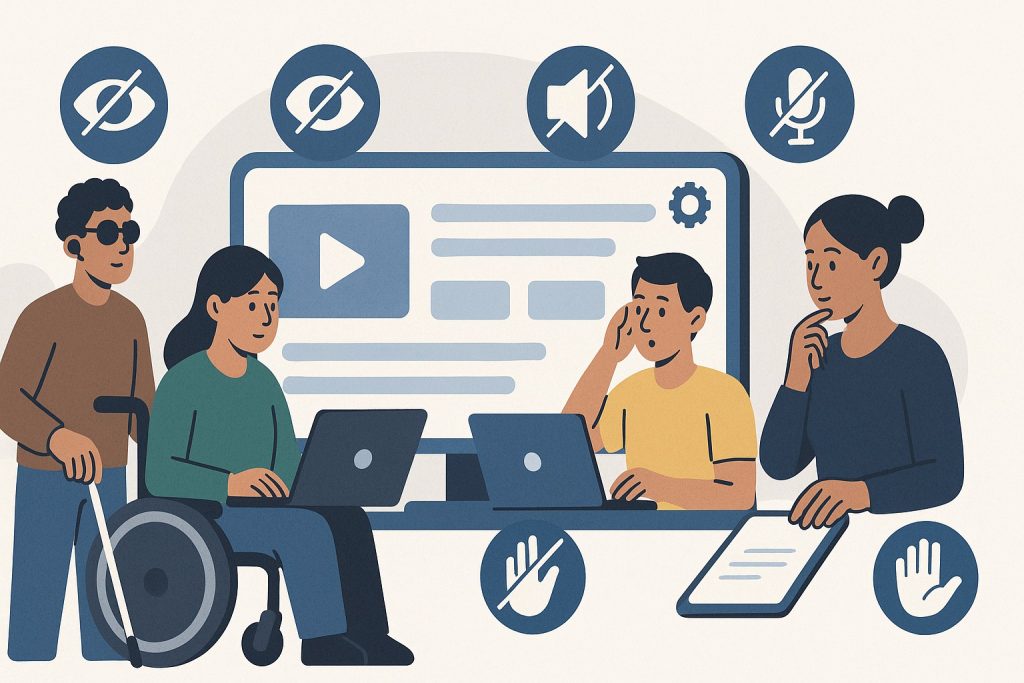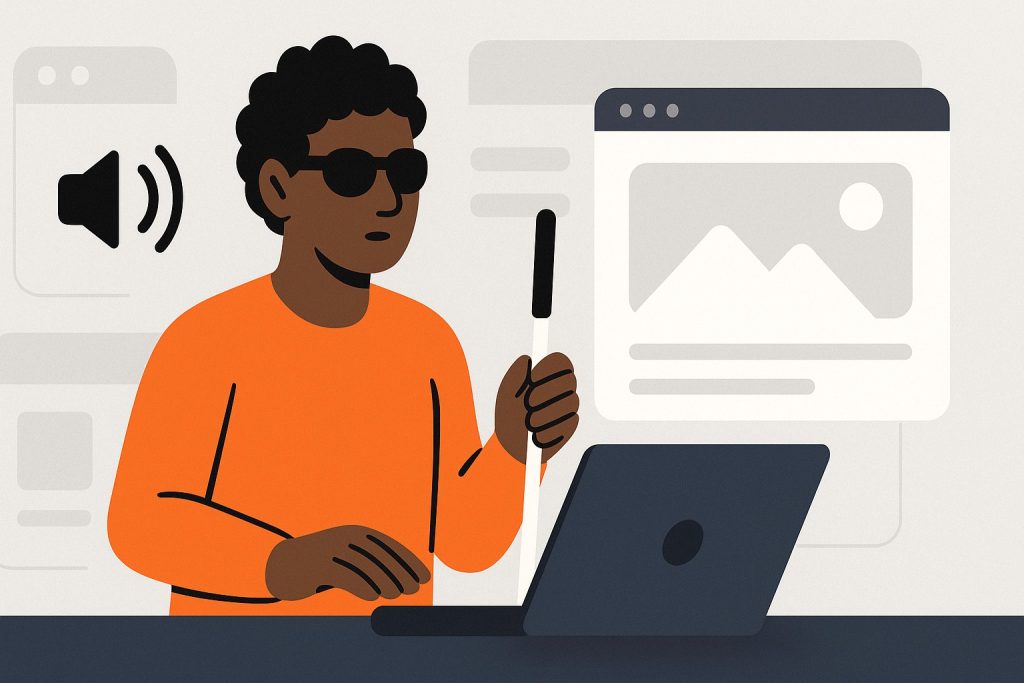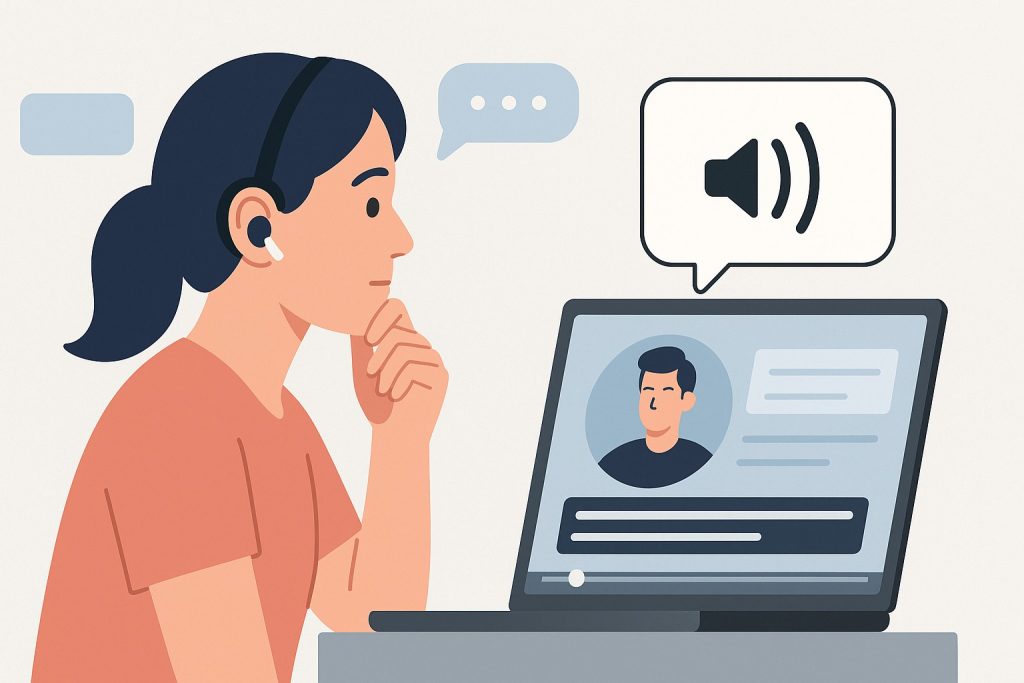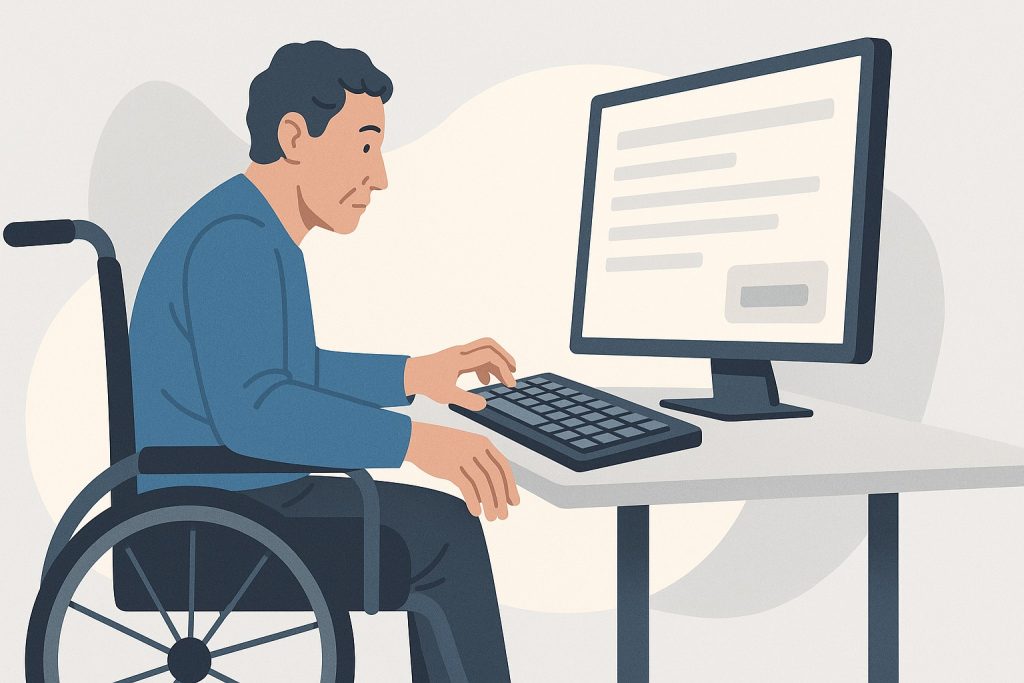A11y Academy: Accessible Content Adaptation

Accessibility (a11y) ensures that digital platforms can be used by everyone, including people with disabilities. Different users need different requirements, visual, auditory, motor, or cognitive, to interact with the content. At this moment plain X provides a good coverage of WCAG AA level. One of our main goals is to become a platform fully accessible for everyone. Learn below how we have made our tool accessible.
Blind and partially sighted users – using screen readers
Users without vision cannot perceive visual layouts, images, or on-screen elements.
To support them, plain X ensures semantic HTML structure, descriptive alt text for images, meaningful link labels, and keyboard accessibility. Screen readers translate content and interface elements into speech, and the platform is fully navigable with keyboard.
Limited Vision
Users with limited vision may struggle to read small text, distinguish low-contrast elements, or interpret visual content that lacks clear structure. This can include people with low vision, color blindness, or age-related visual impairments.
Plain X provides the environment compatible with screen magnifiers, as well as high-contrast elements and screen reader support for the platform.
Without or Limited Hearing
Users who are deaf or hard of hearing may miss important auditory information such as voice instructions, alerts, or dialogue in videos.
plain X largely relies on work with audio and video content, however the users with limited hearing always have the access of the text representation of it in form of the task transcription. Users without or with limited hearing can also perform the translation tasks using plainX.
Without Speaking Ability
Some users are unable to speak due to physical, neurological, or situational reasons.
Interacting with plain X does not involve any audio-based communication, so the users with speaking ability are not in any way limited from using plain X.
Without Color Perception
Users with color vision impairments (color blindness) may not be able to distinguish certain colors, such as red and green.
plain X uses labels and icons alongside color to convey information for better accessibility.
Limited Motor Skills
Users with limited motor skills may have difficulty using a mouse, performing precise gestures, or operating small or tightly spaced controls. This includes individuals with conditions like tremors, paralysis, or arthritis.
Plain X interface has full keyboard support and provides the possibility of navigating the platform in a logical tab order. The hotkey combinations are available to help to perform actions specific for the text editing, as well as navigating the platform in general.
Learn more about the available hotkeys and how to access them here.
Photosensitivity
Photosensitive users may experience seizures or other adverse reactions when exposed to flashing lights or certain visual patterns.
There are no elements with flashing or strobing effects present on plain X interface. However, we advise to verify the content of the media items users work with on the matter of presence of such elements. We also advice the content creators to include the correspondent warning in their content for people with photosensitivity.
We regularly test plain X to stay accessible. If you have experienced a barrier, please let us know using this form.



